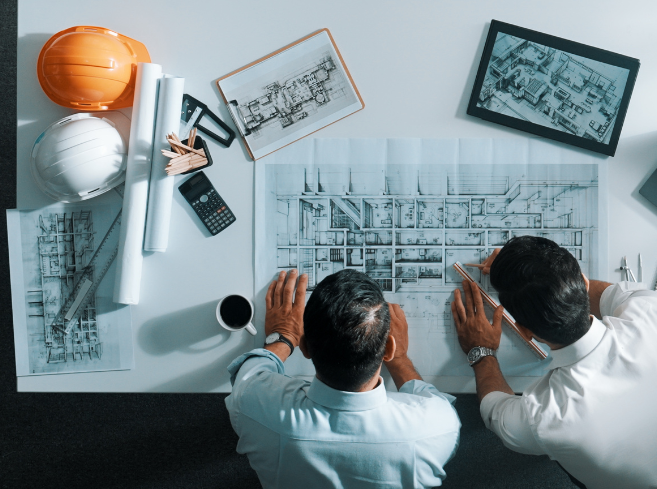Architecture is evolving, not just in form and function, but in its relationship with the natural world. Biophilic design, a concept that integrates nature into built environments, is gaining momentum across the globe. It’s not merely a design trend; it’s a philosophy that recognizes the human need to connect with nature, even within urban and industrial spaces.
Biophilic architecture enhances the sensory experience of space by incorporating natural light, organic materials, vegetation, and airflow. These elements contribute to improved mental well-being, increased productivity, and a more sustainable approach to construction. Whether it’s a corporate office, healthcare facility, or residential complex, the presence of nature within design can transform how people interact with their surroundings.
What Makes Biophilic Design Effective?
The success of biophilic design lies in its ability to create immersive environments that mimic the natural world. This involves more than aesthetic choices; it requires thoughtful planning and technical precision. Natural textures, dynamic lighting, water features, and spatial layouts that encourage movement and exploration all contribute to a holistic experience.
Scientific studies have shown that exposure to nature reduces stress, enhances cognitive performance, and supports emotional health. In architectural terms, this translates to spaces that are not only beautiful but also functional and restorative.
Technology as a Catalyst for Nature-Inspired Design
Modern architecture demands accuracy, efficiency, and collaboration. To bring biophilic concepts to life, advanced AEC technologies play a critical role. Tools like Building Information Modeling (BIM) and Virtual Design and Construction (VDC) allow architects and engineers to simulate and optimize natural elements within a structure before it’s built.
BIM enables intelligent 3D modeling that supports daylight analysis, airflow simulation, and vegetation planning. VDC enhances coordination among stakeholders, ensuring that every aspect of the design aligns with biophilic principles. These technologies reduce errors, streamline workflows, and ensure that nature is seamlessly integrated into the built environment.
A Collaborative Approach to Design Execution
Biophilic architecture thrives on collaboration. It requires the combined expertise of architects, structural engineers, MEP specialists, and BIM consultants. Each discipline contributes to the realization of nature-inspired spaces that are safe, efficient, and sustainable.
From rooftop gardens and green facades to natural ventilation systems and daylight optimization, every element must be carefully engineered. Dedicated project teams and flexible engagement models ensure that design intent is preserved throughout execution, delivering consistent quality and scalability across projects.
Sustainability through Lifecycle Thinking
One of the most compelling aspects of biophilic design is its alignment with long-term sustainability. Lifecycle BIM and facilities management consulting allow buildings to be designed with future operations in mind. Intelligent modeling helps monitor energy usage, water conservation, and maintenance needs, ensuring that the building remains environmentally responsible throughout its lifespan.
Computational design tools like Dynamo scripting further enhance efficiency by automating repetitive tasks and enabling advanced visual programming. These tools support the creation of dynamic, responsive environments that evolve with user needs and environmental conditions.
Why Choose Vee Technologies for AEC Services?
Choosing the right partner is crucial when implementing biophilic design in architecture. Vee Technologies offers a comprehensive suite of AEC services that combine technical expertise with creative vision. With a global footprint and a reputation for operational excellence, Vee Technologies delivers end-to-end building design solutions that align with the principles of nature-inspired architecture.
What Sets Vee Technologies Apart?
- BIM Implementation Expertise: Intelligent 3D modeling that enhances coordination and collaboration.
- Lifecycle BIM & Facilities Management: Data-rich modeling for long-term sustainability and operational efficiency.
- Virtual Design & Construction (VDC): Streamlined planning and visualization for accurate execution.
- Dedicated Studios & Project Teams: Flexible engagement models that scale with project needs.
- MEP & Structural Services: Integrated design solutions across mechanical, electrical, plumbing, FP and structural disciplines.
- Dynamo Script Development: Automation of design tasks for increased productivity and precision.
Vee Technologies' approach ensures continuity, scalability, and cost-efficiency, making it the ideal partner for projects that aim to embrace nature in design.
Biophilic design is redefining the future of architecture. It’s a movement toward space that heals, inspires, and sustains. With the support of advanced AEC services, nature can be woven into the very fabric of our built environment, creating places that are not only functional but deeply human. Through precision, collaboration, and innovation, the vision of biophilic architecture becomes a reality.

